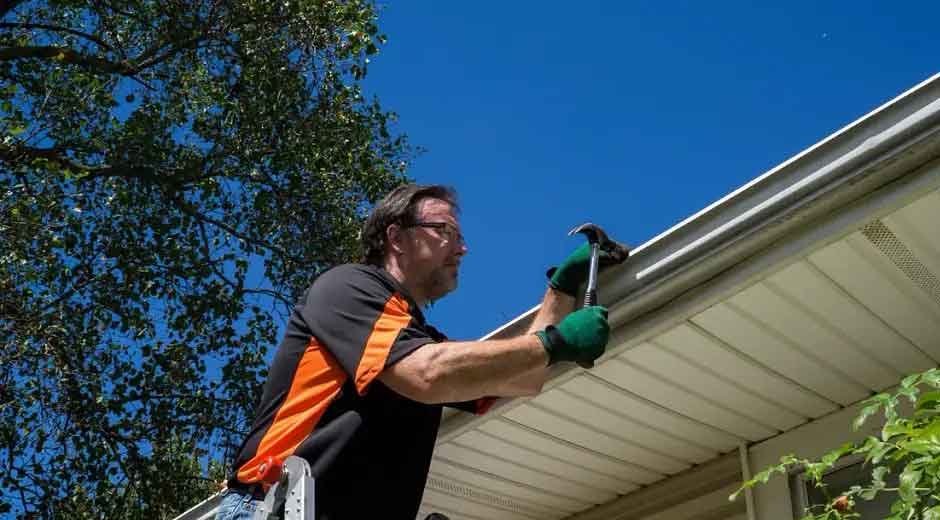Gutters may not be the most glamorous feature of your home, but they play a vital role in protecting your roof, walls, foundation, and landscaping from water damage. Over time, even the sturdiest gutter systems wear down due to age, weather exposure, and general wear and tear. While repairs can extend their lifespan, there comes a point where patching things up simply isn’t enough.
If your gutters are no longer doing their job, it may be time to consider a full replacement. In this article, we’ll explore the clear signs that your gutters need replacing, what happens if you delay, and why investing in a new system can save you money and headaches down the track.
Why Gutter Health Matters
Your home’s gutter system is designed to channel rainwater away from the roof and foundation. When gutters are damaged or clogged, water can pool, overflow, or leak in the wrong places—leading to structural issues, mould, and costly repairs.
A fully functional gutter system is especially crucial in Australia, where heavy seasonal rains and harsh sun can accelerate wear and tear.
Common Gutter Materials and Their Lifespan
Before we look at the warning signs, it helps to understand how long different gutter materials typically last:
- Steel gutters – around 15 to 20 years (prone to rust over time)
- Aluminium gutters – up to 20 years or more (lightweight and rust-resistant)
- Zincalume or Colorbond® steel – 20+ years with proper care
- Copper gutters – 50 years or more (less common and very costly)
Even the best-quality gutter systems can fail if not regularly cleaned and maintained.
Signs You May Need Gutter Replacement
- Cracks, Holes or Rust Spots
A few minor cracks might be fixable with sealant or patching, but widespread damage is a sign your gutters are beyond repair. Rust patches, in particular, suggest that the metal has been compromised and could soon give way.
Check your gutters during dry weather for visible rust, flaking paint, or holes that have formed over time.
- Sagging or Detached Gutters
Gutters are meant to stay aligned with your roofline. If you notice sections pulling away or sagging in the middle, it usually means the fasteners have failed or the fascia boards are rotting due to water exposure.
This kind of structural weakness typically indicates the entire system is under stress—and may need to be replaced rather than repaired.
- Pooling Water or Overflow
Water pooling around your home’s foundation after rain is a serious warning sign. It usually means your gutters are not directing water far enough away. Overflowing gutters during a storm could be due to clogs, but it may also point to incorrect slope or damage that can’t be corrected with a quick fix.
Left unaddressed, this kind of water overflow can lead to basement flooding, foundation damage, or shifting soil around your home.
- Peeling Paint or Water Stains
If you notice peeling paint, mildew, or water stains on your external walls, it’s a sign that water isn’t being properly channelled away. Chronic moisture on your home’s exterior is more than just unsightly—it can lead to timber rot and structural decay.
This is especially common in homes with older steel gutters that have rusted or warped.
- Frequent Leaks at Joints or Seams
Traditional sectional gutters are made up of several pieces joined together. Over time, these joints can become weak points where leaks develop. If you’ve already sealed the same spot multiple times and the leak keeps returning, it’s likely time for a replacement.
Many homeowners opt for seamless gutter systems to eliminate this common issue altogether.
- Mould or Mildew Around the Base of Your Home
Excess moisture from failing gutters can create damp conditions around your foundation, encouraging the growth of mould and mildew. Not only is this unsightly, but it also poses a health risk—particularly for people with asthma or allergies.
Persistent mildew near the base of your home suggests your gutter system isn’t keeping water far enough away.
- Erosion or Damaged Landscaping
If your garden beds or paths are being washed away after a storm, poor gutter performance may be to blame. A properly working system directs water safely away from the home via downpipes and drainage channels.
If your landscaping is regularly damaged after rainfall, it’s a clue your gutters are either broken, blocked, or incorrectly positioned.
When Repair Isn’t Enough
So, how do you decide whether to repair or replace?
You may be able to patch a single leak or replace a short section of gutter. But if you’re dealing with repeated problems, or if your gutters are more than 20 years old, full replacement is often the more practical and cost-effective option.
Signs it’s time to stop repairing and start replacing:
- Multiple leaks or rusted sections
- Repeated blockages despite regular cleaning
- Ongoing sagging or detachment
Water damage to your fascia, soffit, or foundation
Benefits of Replacing Your Gutters
- Improved home protection– Prevent water damage to your roof, walls, and foundation
- Enhanced street appeal– New gutters can freshen up the look of your home
- Low maintenance– Modern systems are more resistant to rust, corrosion, and sagging
- Better water flow– Avoid overflow and improve drainage with well-sloped, seamless gutters
Optional upgrades – Add leaf guards or mesh screens to reduce debris build-up
Choosing a Gutter Replacement Professional
When it’s time to replace your gutters, hire a licensed and experienced roofing or gutter contractor. Look for:
- Local experience with Australian weather conditions
- A clear written quote and warranty on work
- Advice on the best materials for your home
- Optional extras like downpipe upgrades or leaf guards
Avoid DIY gutter replacements unless you’re confident working at heights and understand proper installation techniques.
Final Thoughts
Your gutters are one of the most important systems protecting your home from costly water damage. While occasional repairs can solve small issues, recurring problems or signs of structural failure are a clear indication that it’s time to consider replacement.
Paying attention to the condition of your gutters—and acting quickly when warning signs appear—can save you from much bigger repair bills in the future.










